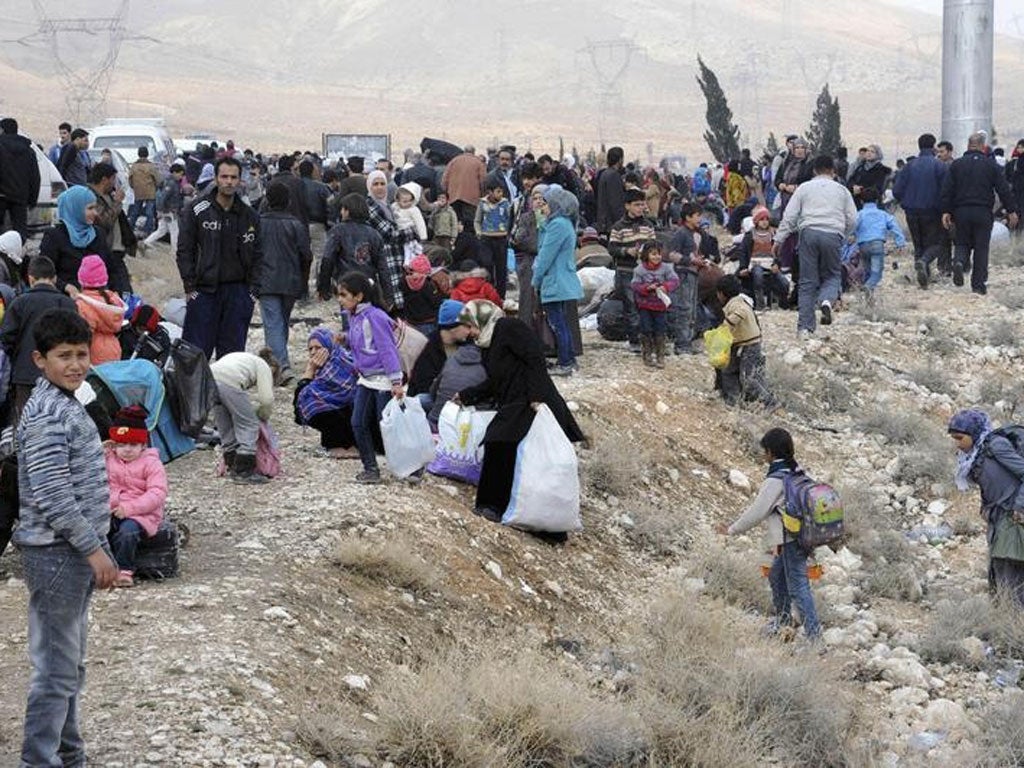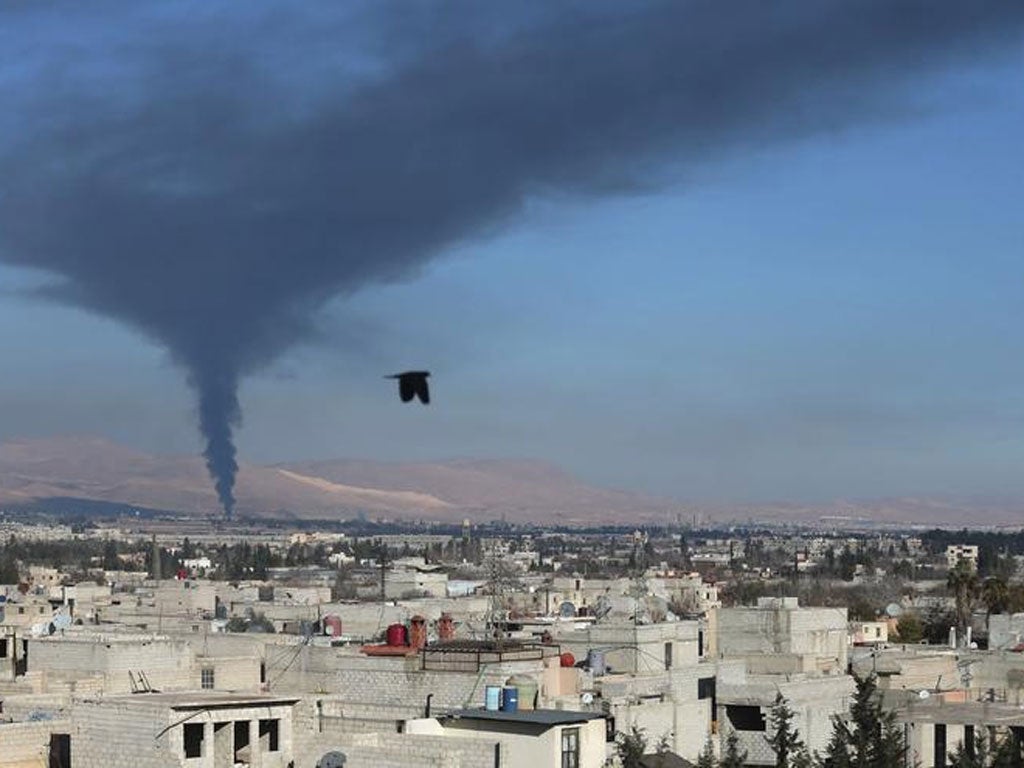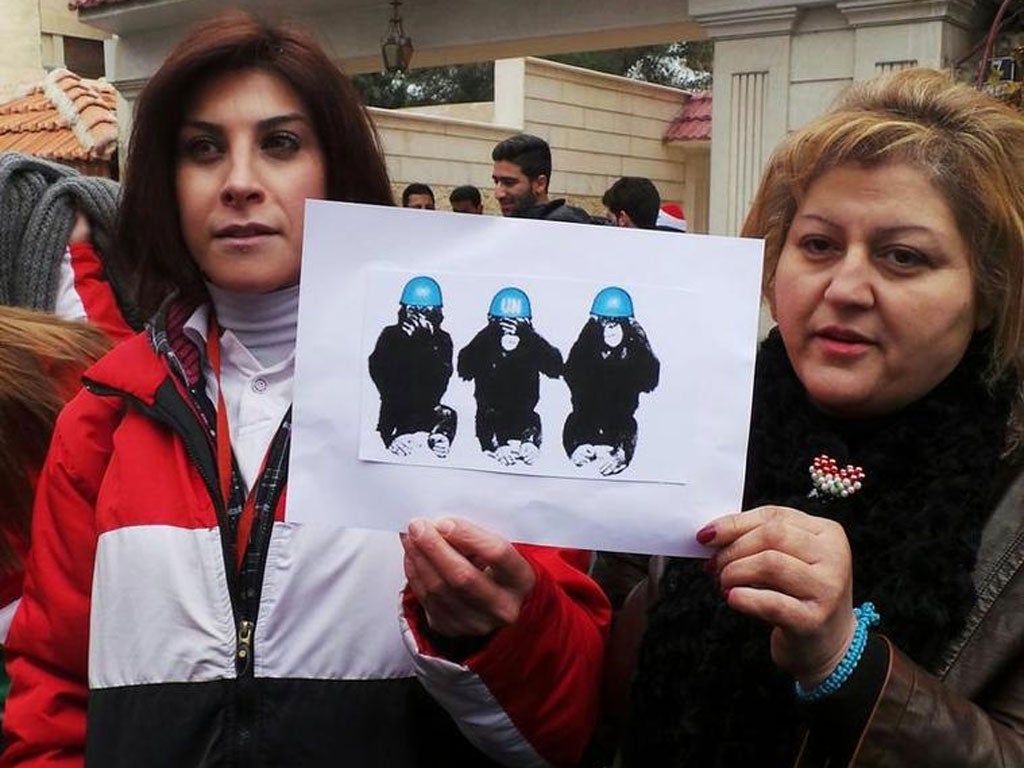Syria: Innocent civilians caught in the crossfire of the siege of Adra as Islamist rebels are accused of massacre
Rebels were accused of a massacre in the town last month, forcing survivors to flee or hide. Patrick Cockburn finds that neither side has the strength for a victory

Your support helps us to tell the story
From reproductive rights to climate change to Big Tech, The Independent is on the ground when the story is developing. Whether it's investigating the financials of Elon Musk's pro-Trump PAC or producing our latest documentary, 'The A Word', which shines a light on the American women fighting for reproductive rights, we know how important it is to parse out the facts from the messaging.
At such a critical moment in US history, we need reporters on the ground. Your donation allows us to keep sending journalists to speak to both sides of the story.
The Independent is trusted by Americans across the entire political spectrum. And unlike many other quality news outlets, we choose not to lock Americans out of our reporting and analysis with paywalls. We believe quality journalism should be available to everyone, paid for by those who can afford it.
Your support makes all the difference.“They came through the main sewer at 4.30am and caught us by surprise,” says a Syrian soldier, who gave his name as Abu Ali, describing the rebel capture of part of the industrial town of Adra, just north of Damascus. “They chose a cold day in December to attack when there was snow and you could not see more than 2ft in front of you.”
Adra, with its giant cement, steel and car plants, has now become one more Syrian town where the army and rebels confront each other but neither side has the strength to win a decisive victory. As they skirmish, locals either flee or cower in their houses with little or no electricity or water.
The rebels who stormed the workers’ housing complex at Adra on 11 December belonged to two much-feared jihadi groups, Jabhat al-Nusra, the official al-Qa’ida affiliate in Syria, and the Jaysh al-Islam.
Khalal al-Helmi, a frail-looking 63-year-old retired employee of the oil ministry, says: “Three men came into our building and shouted ‘Go down to the basement’. We were down there three days.”
What went on in the streets of Adra immediately after the rebel occupation appears to add another grisly page to the list of atrocities in the Syrian civil war. Survivors say at least 32 members of religious minorities – Alawi, Christians, Druze and Shia – were killed immediately or taken away by gunmen who went from house to house with lists of names.
They are also reported to have killed doctors and nurses in a clinic and workers in a bakery who were thrown into their own ovens. Given that the jihadis still hold this part of Adra, the exact details cannot be checked, but survivors who have taken refuge in an enormous cement plant three miles away have no doubt that a massacre took place.

It is not easy to get to Adra, even though it is close to Damascus. We took a highway through the mountains west of the capital and then suddenly drove off it on to a precipitous earth track down which an enormous orange truck with a trailer carrying a bulldozer was driving in front of us. The bulldozer turned out to be one of several making tracks through the scrub and heaping banks of earth to offer some protection from rifle fire. “Drive fast because there are many snipers about,” said an army officer escorting our small convoy.
Our destination was the giant cement plant which a former worker, now a refugee, said once employed 937 workers and produced 3,000 to 4,000 tonnes of cement a day. It now looks like an enormous, dead mechanical monster with pathetic clothes lines carrying refugees’ washing strung between big concrete columns. Nearby was a small party of displaced people from Adra looking bedraggled and depressed. They said the army brought them bread but they were short of everything else.
The fall of part of Adra turned out, like almost everything else in the Syrian civil war, to be more complicated than first accounts. The town was always vulnerable because it is just north of Douma and Eastern Ghouta, both rebel strongholds. An English teacher called Billal said he had been a refugee for a year because the rebels had first taken the old town of Adra in February last year. He and his father took refuge in housing near the cement plant. It was only months later that Jabhat al-Nusra and Jaysh al-Islam launched a second well-planned attack down a sewage tunnel that had outflanked the army defenders.
Syrian Army officers said they thought there were some 500 rebels in the big new housing complex at Adra. It is doubtful if they really know because they also said the rebels were digging tunnels so they could move without being fired on. They had local help, according to a former Adra resident, Hassan Kassim Mohammed, who said refugees from Douma and East Ghouta had been living in half-completed apartment blocks. These had acted as “sleeper cells” for the rebels and had given them lists of government employees. An employee of the information ministry, Heytham Mousa, has disappeared with his wife and daughter and his mobile phone is answered by a man who says he belongs to Jabhat al-Nusra.
I asked several officers why they did not counter-attack and retake Adra. They answered that there were thousands of civilians there whom the rebels were using as “human shields” and they denied an alternative explanation that they were short of soldiers. Even so, it was striking how few Syrian Army troops there were yesterday, either at the cement plant or in the front line, where there had been fighting around a bridge earlier in the week.
“They captured it and we took it back in five hours fighting,” said Abu Ali. An explanation as to quite why small rebel enclaves persist in Damascus and Homs is that government forces cannot afford to suffer the casualties inevitable if they stormed them. They have therefore relied on sieges and artillery bombardment to wear down rebel-held districts.

There may be doubts about the exact number of people murdered in Adra but not about the suffering of those who have fled to the industrial zone. It is cold even in the middle of the day and the Syrian Arab Red Crescent yesterday issued a statement saying it “was deeply concerned about the plight of the Adra residents who had fled the area”. It had distributed 31,000 blankets and 7,000 mattresses and was trying to provide clean water to 30,000 people.Adra is now surrounded by sand and rubble with occasional Syrian army outposts on top. Even so, the exact position of the front line was worryingly uncertain. At one point, a couple of Syrian army soldiers seem to have mistaken us for the enemy and fired a couple of shots.
A soldier in the vehicle in front of us jumped on to a heap of rocks and waved furiously in the direction from which the firing had come. Around the corner we came on what appeared to be an entire Syrian armoured division but we turned out to have stumbled on a tank cemetery where the Syrian army disposes of obsolete tanks which are left to gradually rust away.
Join our commenting forum
Join thought-provoking conversations, follow other Independent readers and see their replies
Comments